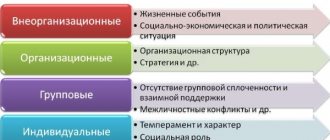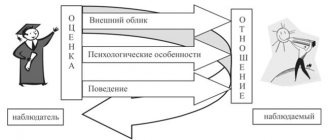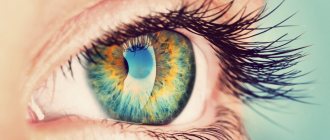Respiratory neurosis – this type of neurosis is a dysfunctional disorder of the respiratory system due to deviations in the psychological spectrum. This is explained by the fact that the work of the lungs is controlled by certain areas of the brain and other structures of the central nervous system. Thus, the cause of respiratory neurosis is located in the deep emotional (psychological) spectrum of the patient. In order to understand how to get rid of this problem, you should expand on the topic “Respiratory neurosis treatment using medicine and folk remedies.”
Respiratory neurosis symptoms
How are neurosis and the respiratory system related? Sudden stress or prolonged depression causes the nerve formation in the medulla oblongata called the respiratory center to fail to control the muscles that provide rhythmic movements: inhalation and exhalation. It starts to work chaotically: too fast or slow. Accordingly, a non-standard level of air (oxygen) enters the lungs, and the saturation of the blood with it is lost.
As a result, respiratory tract neurosis involves the following symptoms:
- shortness of breath, difficulty breathing;
- lump in the throat;
- increased heart rate;
- pain syndrome in the heart;
- muscle pain, tension, tics and tremors;
- dizziness, sometimes accompanied by fainting;
- darkening in the eyes or the appearance of “floaters”;
- chronic fatigue and, accordingly, decreased performance.
Probability of occurrence
Modern medicine examines the topic “Respiratory neurosis treatment” in relation to the risk group, which includes people with the following personal characteristics:
- asthenic traits (neurasthenics and psychosthenics);
- anxious suspiciousness or hypersensitivity as character traits;
- lability (instability) of the emotional background - a radical change in mood at the slightest provocation;
- temporary or prolonged depression;
- rigidity – low adaptability to life changes, etc.
That is, here the conditions for the development of respiratory neurosis (as well as intestinal neurosis, cardiac neurosis, etc.) are the initial weakness of a person’s psycho-emotional characteristics. However, people who have come under the sudden influence of traumatic situations (death of loved ones, disaster, etc.) may be susceptible to the development of neurosis.
Regarding different age categories and gender. Firstly, it can be noted that both the neurosis of adults and the neurosis of children are revealed. Respiratory neurosis in children has the same symptoms and treatment as in adults. Secondly, female representatives are more susceptible to this problem due to their enhanced emotional characteristics (one might say innate).
Vegetative-vascular dystonia and osteochondrosis
Modern living conditions often cause the development of a number of diseases. VSD and osteochondrosis often occur in pairs. What is this combination of pathologies and how to detect their presence in time?
Osteochondrosis is a degenerative disease that gradually destroys the fibrous tissue of the spinal column, causing pain in the affected area. If the cervical or thoracic spine is damaged, in most cases, vegetative-vascular dystonia is eventually diagnosed. VSD affects the entire body as a whole, affecting its autonomic functions. At the same time, the symptoms of VSD and osteochondrosis may be similar and disguised as other diseases.
What is the connection between these two pathologies? With osteochondrosis, the tissue between the vertebrae is deformed and gradually destroyed due to insufficient nutrition. As a result, pinching of the blood vessels supplying the brain tissue may occur. In this case, the brain will not receive enough oxygen, which will ultimately cause the problem to worsen.
On medical forums, VSD and cervical osteochondrosis are quite popular topics for discussion. The main cause of osteochondrosis and, as a consequence, vegetative-vascular dystonia lies in a person’s lifestyle. With insufficient physical activity or incorrect position when walking, working at a table or computer, or reading, blood flow is disrupted, that is, cells do not receive enough substances necessary for their normal functioning. Sleeping on an uncomfortable bed or having endocrine problems can have the same effect. Excessive stress on the spine accelerates degenerative processes, causing spasms and lumbago in the muscles.
Diagnosis and treatment
After we have looked at what respiratory neurosis is and its symptoms, it is necessary to delve into its treatment at home and with the help of modern medical services.
Respiratory respiratory neurosis can be detected after full diagnostic procedures, including clinical tests and hardware technologies. If these methods do not reveal actual physiological disorders, a conclusion is drawn about the presence of neurosis.
When a patient is faced with the question of “Respiratory neurosis treatment,” adopting a certain body posture or specific hand movements often helps get rid of the unpleasant condition. However, this does not solve the problem on a deep emotional level.
Areas of professional therapy:
- Psychological/psychiatric assistance (depending on the degree of depression of the nervous system and depression of the state) in the form of periodic conversations with a specialist. Not every adult will take this step, considering it somewhat shameful. If you do not accept the idea of visiting a doctor, you must at least try to independently understand the original psychological problem that affects the somatic state of the body.
- Drug treatment. Respiratory neurosis and its symptoms primarily involve treatment with the following drugs: mild sedatives (Glycine), as well as modern tranquilizers (Afabozol) and antidepressants (Adepress). In addition, more specific means aimed at working with panic attacks can be used. This could be Sonapax and Eglonil for respiratory neurosis (as with any other type of neurosis). The question “How to treat respiratory neurosis” is not limited to the medications described above. Respiratory neurosis may, among other things, require treatment with homeopathy. This issue is somewhat controversial and there is no direct evidence of the effectiveness of such therapy. In any case, this measure may be applied additionally.
- Physiotherapy: exercise therapy, Charcot's shower, darsonvalization, electrophoresis, ultraviolet irradiation, electrosleep, exposure to low frequency current. It should be noted that the procedures are applicable exclusively as part of complex therapy.
- Sanatorium-resort treatment is more likely to be used not at the peak of the problem, but as a preventive measure and strengthening of general health, as well as emotional tone. A change of environment in this case has a beneficial effect on the psychological state of the patient when a problem such as respiratory neurosis occurs.
Respiratory neurosis, having a psychological origin and corresponding symptoms, may require treatment at home:
- Breathing exercises for pulmonary neurosis. In this case, both breathing exercises are applicable for neuroses in general, and specifically for stabilizing the functioning of the respiratory system. It calms the nervous system, works as a distraction method and is effective in relaxing muscles. Breathing exercises as a treatment are extremely effective for neuroses in children, especially in the younger age category.
- Taking natural sedatives. It is worth noting here that specifically respiratory neurosis does not require treatment with folk remedies. Rather, these methods are aimed at stabilizing the nervous system as a whole. Often, herbal teas and decoctions that have a beneficial effect on the central nervous system are used for this: chamomile, lemon balm, valerian, etc.
- Treatment of respiratory neurosis involves the use of relaxing baths using herbs and minerals that have a beneficial effect on the nervous system as a whole. Such a bath should have a temperature of about 38 degrees and be used in the evening to avoid unnecessary relaxation during the day. In this case, it is allowed to use pine needles in an amount of about 300 grams at a time or a special extract sold in ready-made quantities. Infusions from calamus and barberry rhizomes are also applicable. In addition, an ingredient such as alum can be used. Their volume for a single use is approximately 50–60 grams with the addition of 150–200 grams of soda.
Respiratory neurosis in children requires the same treatment as in adults. In this case, only medications with psychotropic effects can be replaced with weaker ones. Or they are canceled altogether.
Precautionary measures
To avoid asthma attacks, you should follow the following rules:
- reduce or eliminate the consumption of alcohol and energy drinks;
- drink coffee and teas in moderation;
- stop smoking;
- take vitamin complexes containing vitamin B and magnesium, which support the nervous system and improve the general condition of the body; engage in light physical activity after your doctor’s permission;
- Take a daily evening walk in the park.
Recommendations for respiratory neurosis
Treatment of respiratory neurosis involves effective recommendations. So, Top 10 tips answering the question of how to get rid of respiratory neurosis:
- It is necessary first of all to establish stable central nervous system function. In this case, we are not talking about neurological pathologies of a congenital or acquired nature (which is sometimes also possible), but about the emotional sphere of life.
- It should be understood that respiratory neurosis involves not only treatment with medications, but psychotherapy and home prevention. Treatment should be applied exclusively in a comprehensive manner.
- To prevent neurotic attacks, situations accompanied by nervous tension should be avoided. In this case we are talking, among other things, about emotionally costly physical work.
- It is worth developing an individual calming regimen when a neurotic attack occurs, which will be used during the main treatment.
- It should be remembered that complex treatment should not be depressing. Breathing exercises for neurosis and depression, exercise therapy, visits to procedures and other methods of treatment should be moderately distributed throughout the day.
- Treatment of respiratory neurosis may be accompanied by the search for new hobbies that increase the overall positive mood and have a distracting function.
- Respiratory neurosis and its treatment involves exercises in the form of exercise therapy or narrowly targeted gymnastic actions. If you find it difficult to do independent exercises given to you by your doctor on a form with visual support (pictures and diagrams) or attend classes, then you can use the functions of online content. Breathing exercises for respiratory neurosis are widely used in the format of video lessons. Here you will not only be told about how to cure neurosis, but also shown breathing practices.
- Follow a rest and sleep schedule, and also give up bad eating habits (despite these recommendations being hackneyed, they are extremely important).
- Enter a temporary individual daily routine that excludes any chaos and turmoil in your life.
- Be patient. The doctor will not be able to answer in advance the question of how long it will take to treat your type of respiratory neurosis. The situation is extremely individual and depends on the degree of depression of the person’s psyche and his willingness to undergo treatment.










